Showcase Your Level Art Skills: A Guide to Portfolio Perfection
If you are applying for a Level Artist position at any game development studio, we are happy to share recommendations for creating an outstanding portfolio! This is the thing that will help you demonstrate all your skills to a potential employer, and it’s not way too hard to cause a WOW effect! 😉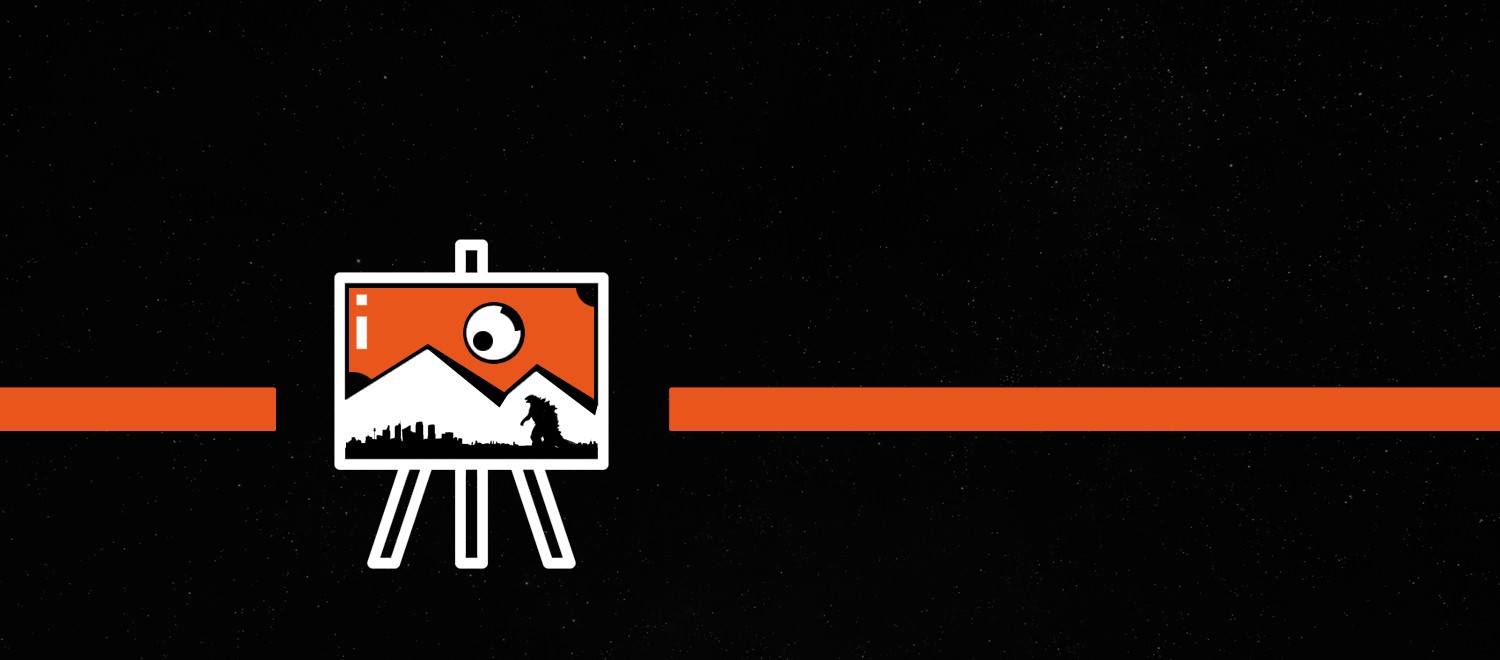
Essential Elements for Portfolios at Different Levels
Serhii:
“The primary task of Level Artists is to assemble the location according to the greybox created by Level Designers. They are also responsible for adding micro-stories that complement the narrative, creating compositions of various scales, clear player guides, working with modularity and architecture, initial level optimization, and placing lighting if necessary.
That’s why I believe that portfolios should include the following:
Junior Level:
- Include examples of at least 1-2 levels. These don’t need to be large; a few small levels are enough to demonstrate your skills in assembling a location.
- Showcase compositions and basic navigation rules to illustrate how you tell a story through level art.
- Include screenshots from blocking to the final image, along with the references you used.
- If you can model and texture, include some of your models as a bonus.
Middle Level
- You may present larger locations in your portfolio, though size is not the primary focus.
- Emphasize compositions, basic navigation rules, and storytelling through level art.
- Showcase your work with lighting and include screenshots from blocking to the final image, along with the references you used.
- Include models or artworks with materials, particularly if they are of high quality.
- Relighting locations bought on marketplaces can also be a plus. Display any additional skills you possess.
Senior Level
- Include completed projects, with at least a few outstanding works that showcase all your skills.
- If you can’t demonstrate such works for any reason, feature strong works done from scratch, with minimal use of marketplace models – they will demonstrate your skills.
- Focus on detailed work, adding interesting stories to your projects to highlight your skills.
- Experiment with new software, since you are already familiar with development principles, so assembling a level should not be a problem.”
Quality Over Quantity
Serhii:
“I believe it’s better to have a few outstanding pieces in your portfolio rather than many old ones or drafts. Even one excellent work is preferable to three outdated ones.
The only exception is if you rework an old piece and present both the original and updated versions together, which is perfectly fine.
Descriptions aren’t always crucial, but a good story for the location can be a plus. Otherwise, let the work itself convey the mood and emotions. If the recipient understands this, the description becomes a formality that you can omit.”

Oleksandra adds:
“I recommend captivating the potential employer with the work itself. It should be impressive. To achieve this, I suggest using compositional rules, creatively playing with the silhouette and form of your scene, and highlighting the main object. Additionally, you can include references and sketches to showcase your conceptual understanding.”
Publishing Your Portfolio on ArtStation:
According to all our artists, ArtStation is one of the best platforms for hosting a public portfolio. We want to share examples of what works well* (*the authors of the works below are not employees of our studio, but we consider their public portfolios strong examples):
- First of all, write a short intro of yourself as a professional, add the main links to your social networks, where you also share your work. For example:
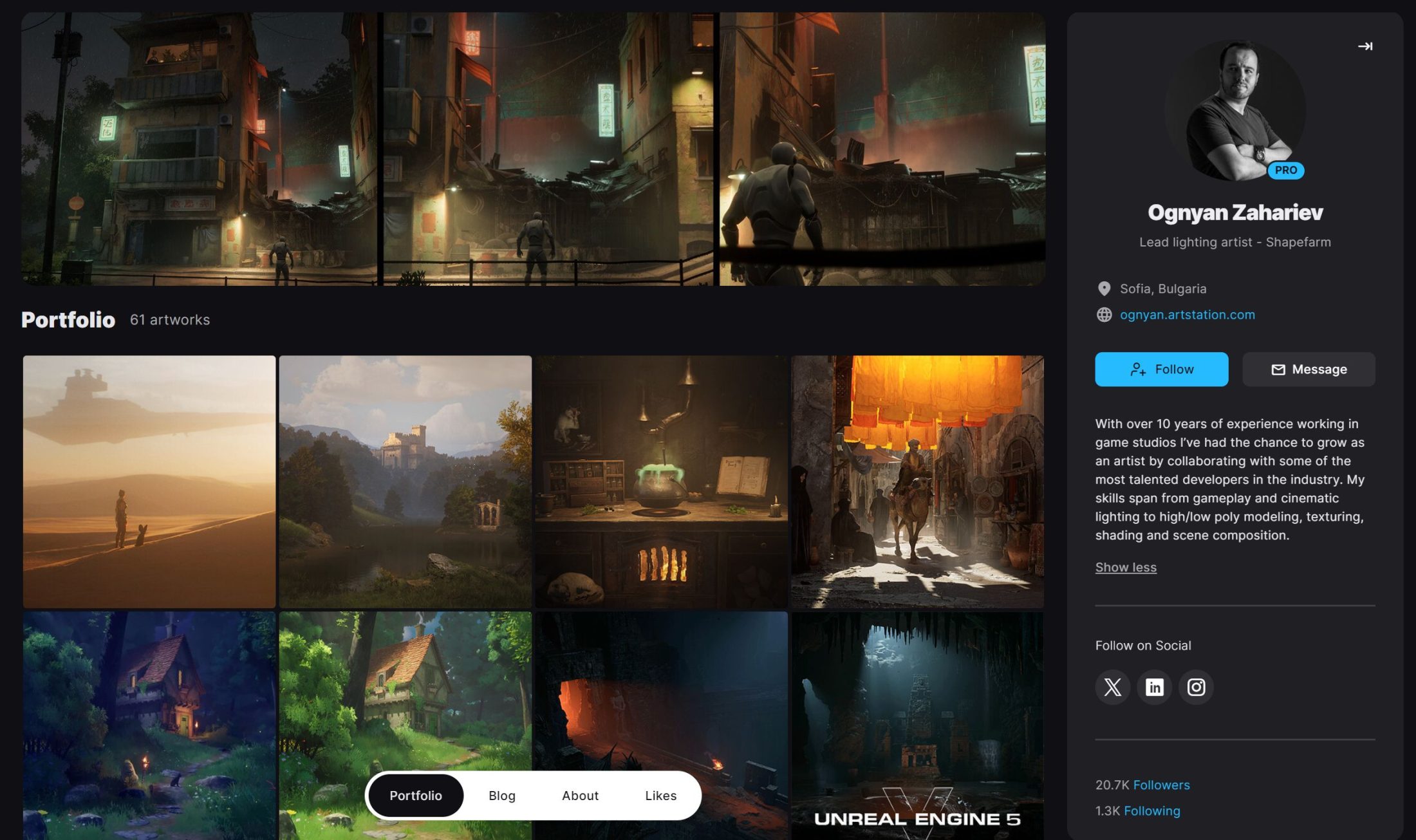
- It is desirable to have nice renderings for the cover. Also, if you can divide the works into categories, better do it. This will simplify navigation through your portfolio, here’s a good example:
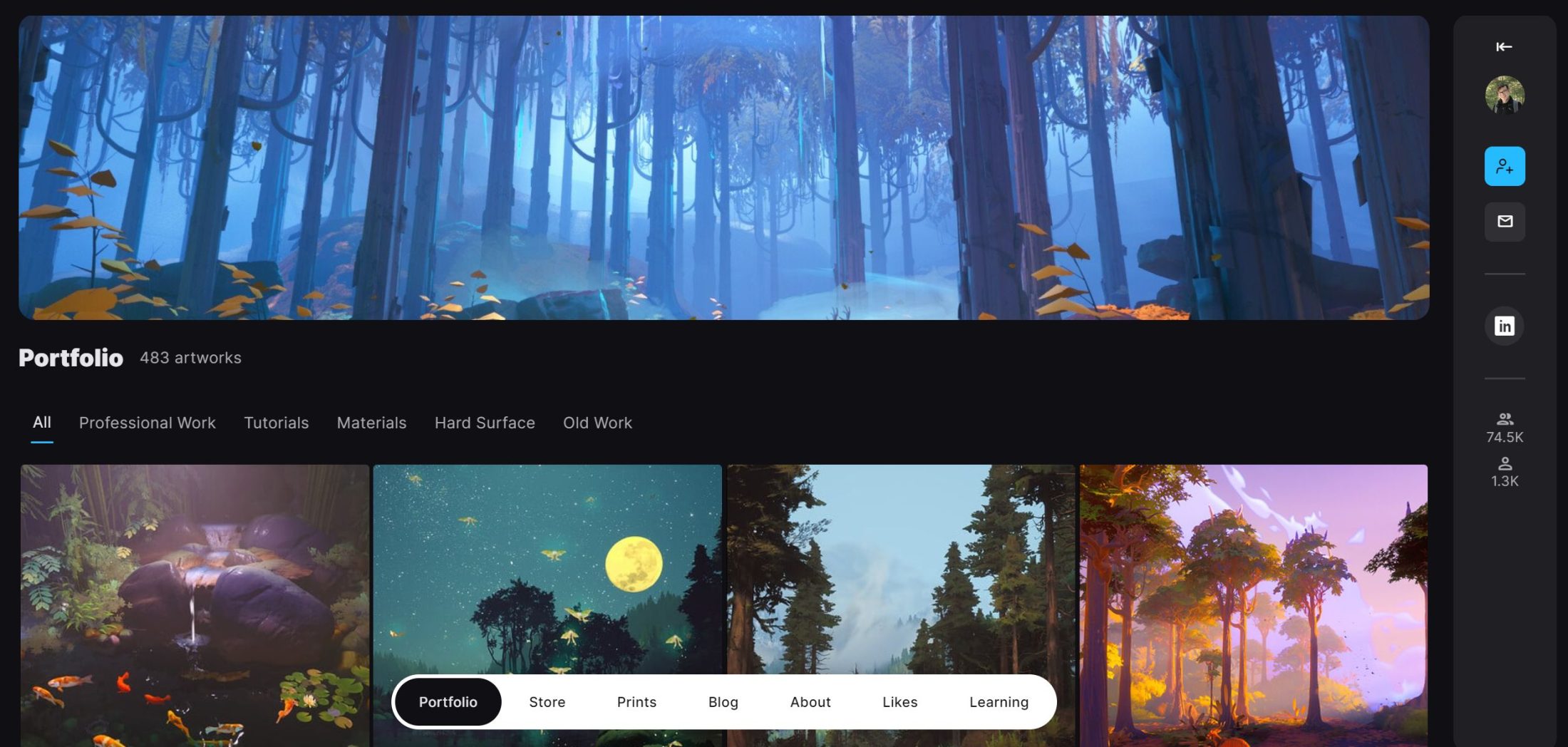
- Add concise descriptions of the works and indicate which programs you used to create the art.
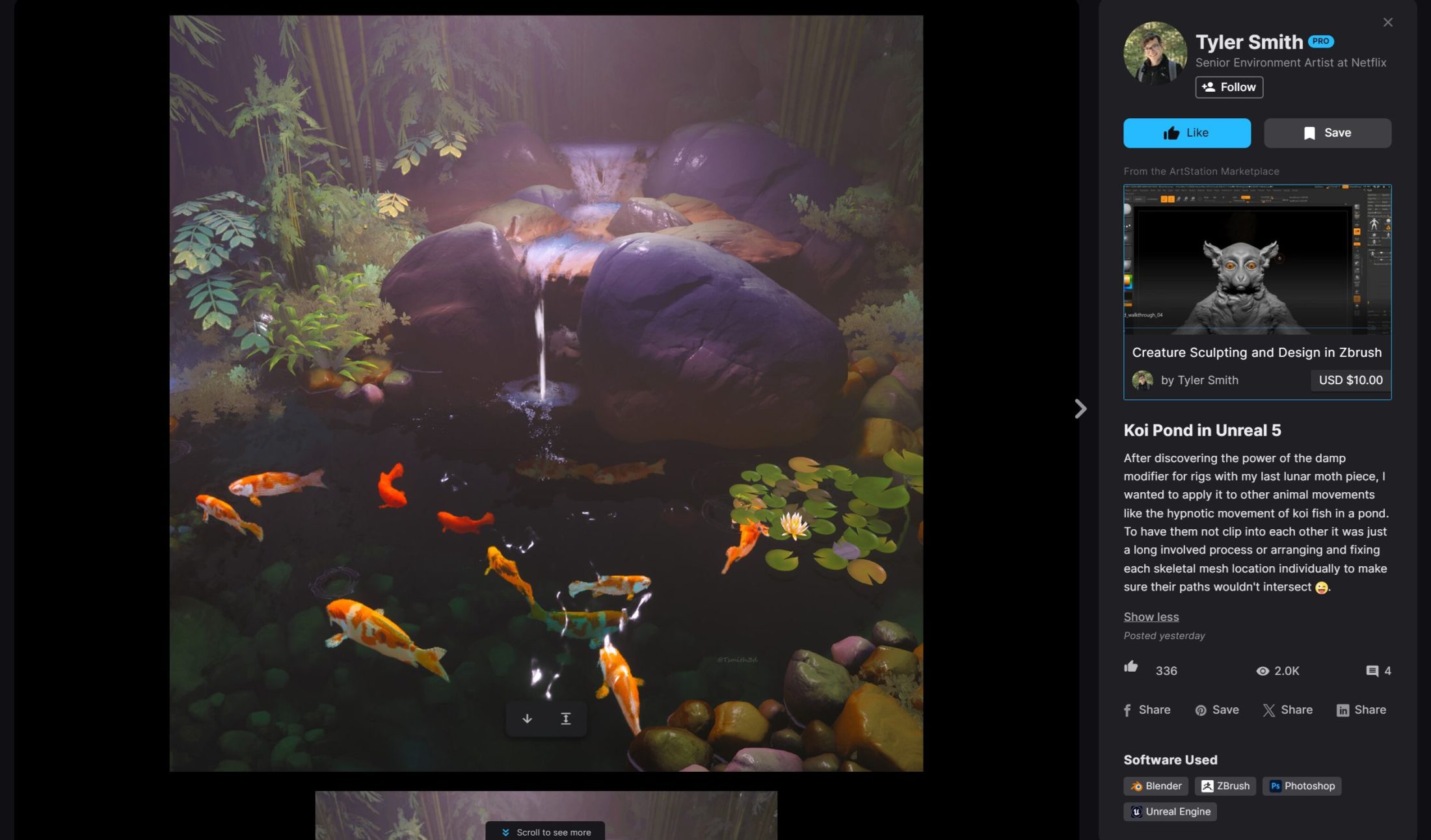
- You can also add basic data about the work (name of the artist, name of the project, etc.) and the art itself, like it’s done here.
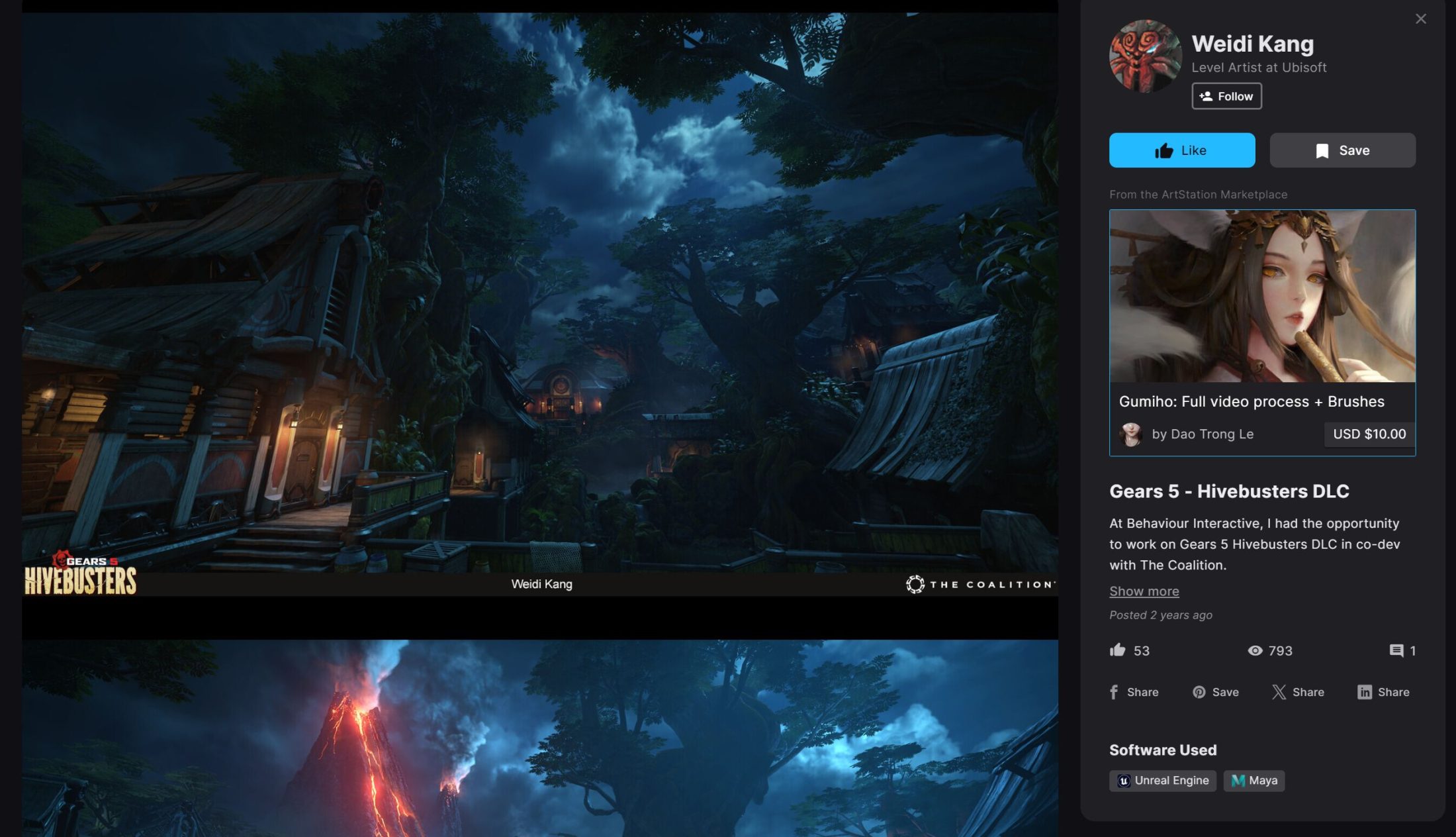
- Many artists add the logo of the driver, here is an example:
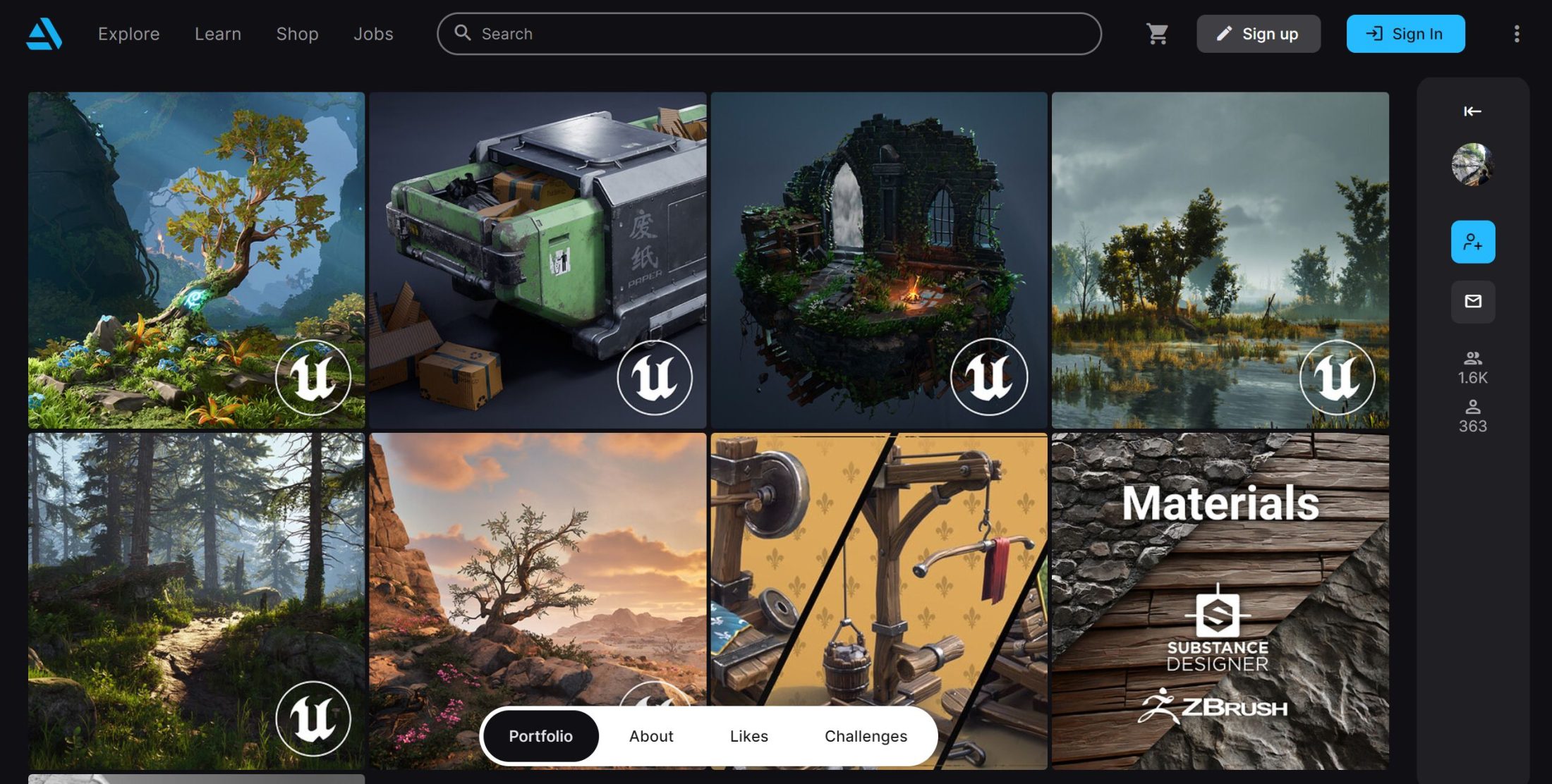
- In addition to images, we recommend adding a video if you have one, like this:
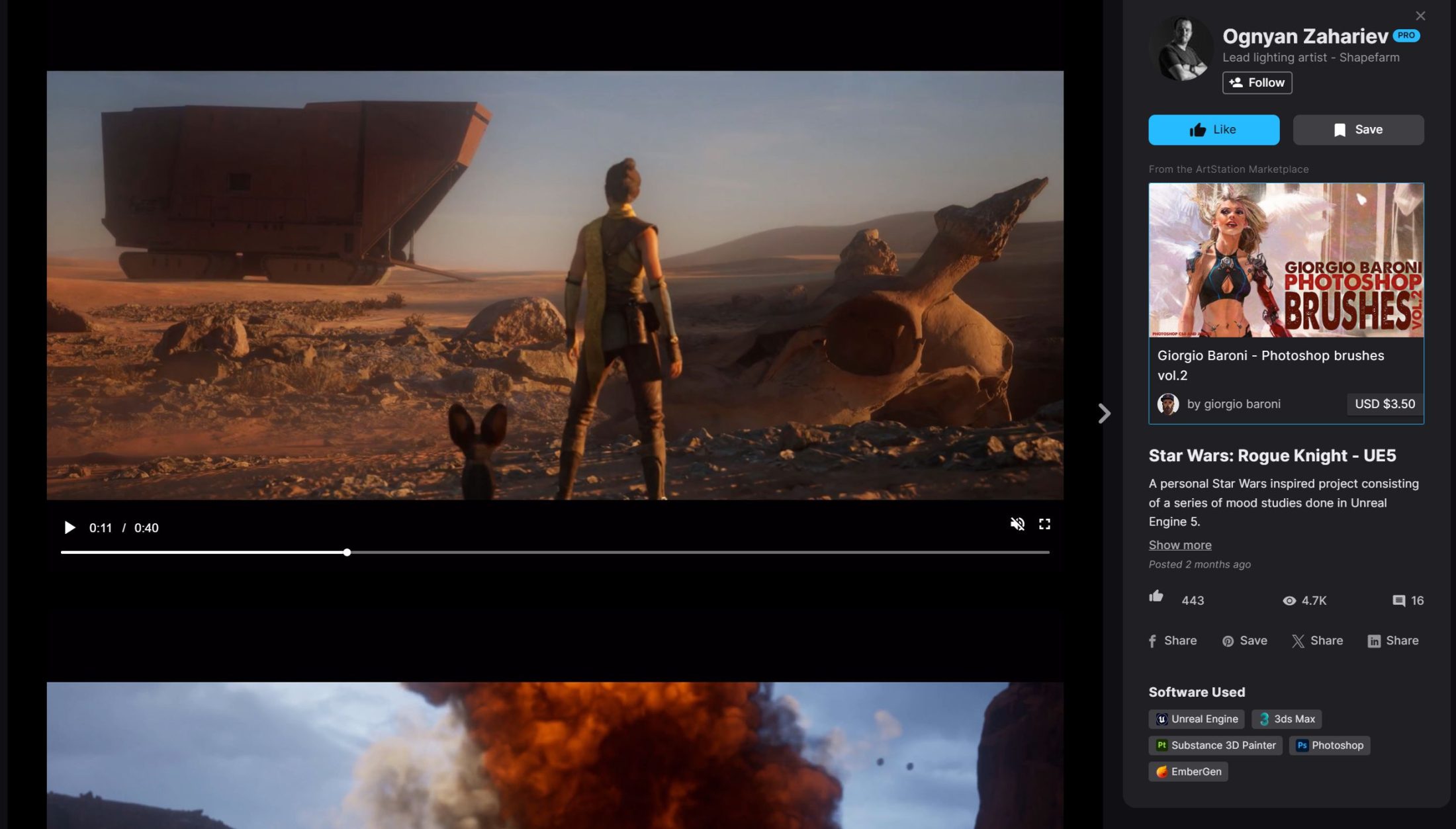
Bonus Skills to Demonstrate through Your Portfolio
Serhii:
- “Skill in modeling is a significant plus, as it allows you to create models without waiting for the 3D department to make a blockout model for you.
- Additionally, experience in texturing, or at least an understanding of how textures are created and integrated into the engine, is beneficial. I recommend showcasing these skills in your portfolio if you have such pieces.”
Oleksandra:
- “In your portfolio, you can also showcase work with lighting. In some studios, a Lighting Artist handles this, but if you know how to work with light, it will be an advantage.
- It’s important to convey the atmosphere you want to create. This includes using post-processing effects and working with VFX effects, which will add mood and liveliness to the image. If it’s a video, add a music track that strengthens the location’s mood.
- Additionally, it’s important to demonstrate your ability to enhance detail through the use of decals.”
Final Thoughts
Besides everything mentioned, remember that your portfolio should never remain unchanged after it’s created. As you grow as a specialist and acquire new skills, make sure to reflect these in your professional gallery. Stay inspired!
Oleksandra shares a few tips on where to find inspiration for growth, which you can start using right now, no matter where you are in your career:
“A Level Artist should have a strong visual library. This means playing a lot of games or watching walkthroughs and analyzing all the interesting decisions. Take screenshots to build up a reference library.
I also take photos of the environment when I travel to have my own references for locations, natural elements, and interesting real-life scenarios.
Analyze the visuals, even if it’s just a frame from a movie you liked. Think about why you liked that particular image, what caught your eye first, what compositional choices were made, and so on. Pay attention to details and blending, both in real life and in games.”
Ultimately, we wish you the best of luck with your portfolio and continued success in your journey as a Level Artist! 🙂
P.S. If you’re curious about the differences between the roles of Level Artist, Environment Artist, Level Designer, and Technical Game Designer, we recommend checking out this material where our teammates explain it in simple terms. 🙂


